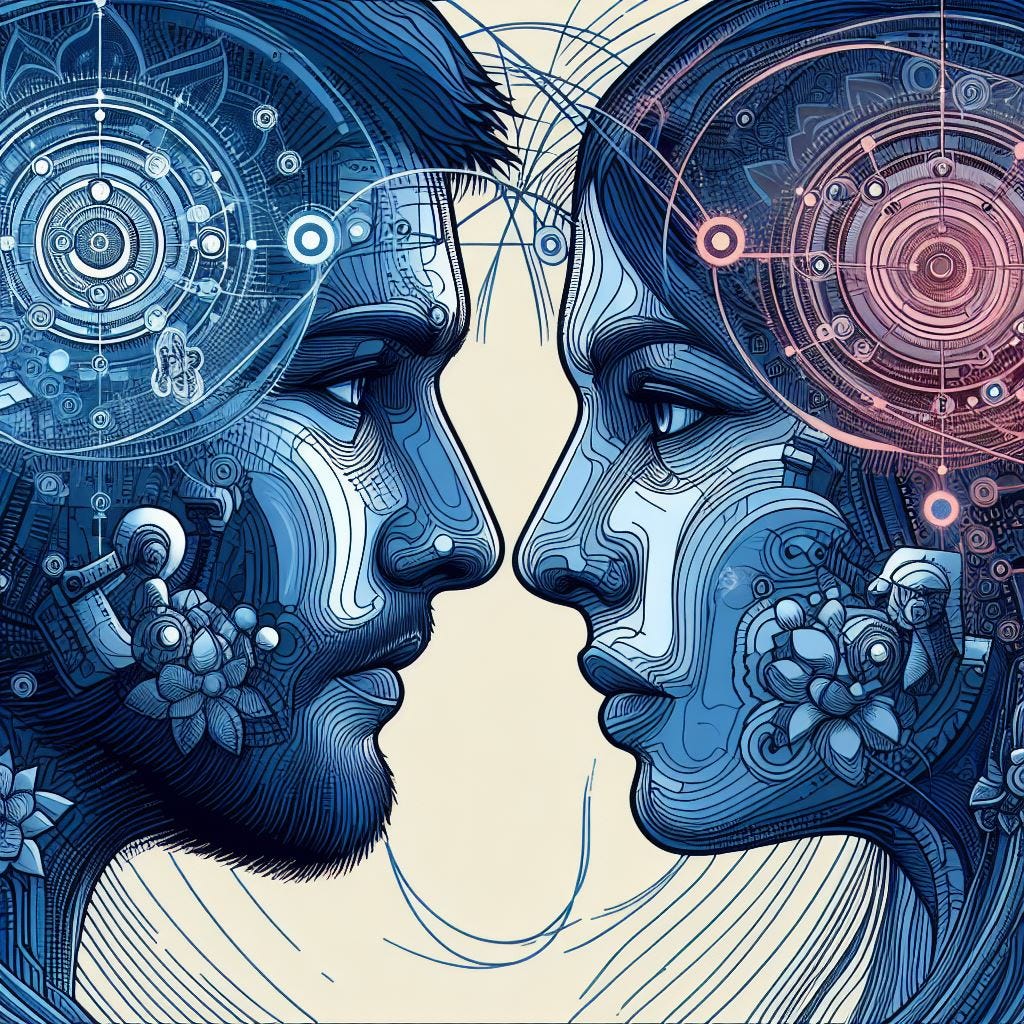How gift-giving can help you communicate
How learning the art of gift-giving can help you communicate, the beauty of Rembrandt lightning, the evolution of 3D animations and a new way to view time
What should we give our friends or family this Christmas?
One of the main reasons we give each other gifts, is to build and cement our relationships.
However, while giving a lovely gift can impress another, and helps deepen a relationship, giving a poorly-chosen gift can have the opposite effect. It’s why we fret over whether to give a spouse an experience, such as cooking lessons, or a fashionable piece of clothing? Do we give a friend a bottle of fine wine, or if we can afford it, take them wine-tasting?
Giving gifts has consequences. So which types of gift should we gift each other, and why, and what has that to do with communicating better?
The answers can be found in a fascinating research paper entitled “Experiential Gifts Foster Stronger Social Relationships than Material Gifts”, by Cindy Chan of the University of Toronto, Canada and Cassie Mogilner of the University of California, published in the Journal of Consumer Research.
The research investigates the impact of different types of gifts on the strength of interpersonal relationships.
The researchers conducted experiments examining actual gift exchanges in real-life relationships.
They found that experiential gifts (events for recipients to live through) produce greater improvements in relationship strength than material gifts (objects for recipients to keep), regardless of whether the gift giver and recipient consume the gift together.
Given that this is a newsletter designed to help you and colleagues improve your communication skills, why are we talking about gift-giving?
Because the research on gift-giving reinforces two significant points you must keep front of mind when communicating your message: know your audience, and remember the importance of making an emotional connection with them.
Just as you shouldn’t assume that giving material gifts (objects) is the best way to foster a relationship with friends and family, also don’t assume that sharing information (facts) is the best way to foster a relationship with your audience.
In our Factual Storytelling School module Know Who You Are Talking To, we have eight lessons covering how your audience will react to your message, how to learn to listen to your audience, what your audience expects and why audience culture matters.
Emotional connections matter more. In their research paper, Chan and Mogilner state: “Research on relationships highlights emotion as a key feature in relationship development and maintenance.”
It’s why giving an experiential gift has a greater impact, as an experiential gift tends to elicit a stronger emotional response than a material gift, when a recipient consumes it - think of the awe of an adventure trip, the excitement of being taken to a art gallery or rock concert, or the calmness of a spa day.
When people communicate facts about themselves, their business or enterprise, they naturally tend to forget this. And that is a big mistake you should try to avoid (see our Factual Storytelling School lesson Why Stories Are Better Than Facts).
Emotions also drive how we consume and engage with content.
We have an emotional response to almost everything we read and listen to; including being peeved by garage repair prices, salivating over restaurant menus, or impressed with our company’s latest sales figures (see our Factual Storytelling School lesson It’s Time To Get Emotional).
So create content that you imagine will emotionally provoke your audience. And when you create your factual content, don’t necessarily strip out, or leave out, emotions from what you have to say.
We’d like to give a festive hat-tip to Patrick Fagan, a behavioural scientist, who initially flagged the research mentioned above on LinkedIn. If you’re interested in similar insights into how people behave, we recommend you give him a follow.
As an aside, if you’ve still to buy gifts this Christmas, remember this: you don’t have to spend much.
Giving experiments have shown that despite gift givers’ beliefs that expensive gifts will be more appreciated, recipients appreciate expensive and inexpensive gifts alike. People receiving gifts also tend to put a lower monetary value on a gift than its actual cost.
And you don’t have to think too hard about what to buy, as according to the research paper: “Although gift givers think that unsolicited gifts convey greater thoughtfulness and serve as a stronger signal of relationship value, recipients prefer receiving cash or gifts that they had explicitly requested.”
The beauty of Rembrandt lightning
When you tell your factual story, try to embrace visual storytelling techniques, such as using photographs or videos.
And when people are your subject, try to include a visual effect known as Rembrandt lightning, so-called because the famous artist used this type of light in his paintings to dramatic effect.
Rembrandt lighting is now a standard lighting style used in portraits.
You can achieve the same by placing a light to the side of your subject, exposing one side of their face. Then move the light back towards the camera, until you see the light just starting to catch the other side of the face, casting a triangular shadow from the nose across the cheek. Experiment with the light position to get it just right.
You and your colleagues can learn about this and similar techniques when you enrol in the Factual Storytelling School, which includes a whole module titled Embrace Visual Storytelling.
The evolution of 3D animations
The latest release of Adobe After Effects is now available (version 24.1, December 2023).
For those not in the know, Adobe’s After Effects software is an incredible content production tool that can be used to create and add motion graphics and animations to factual videos, and also make animated online graphics.
The latest release includes several new features and enhancements, most of which will enable users to better create and employ 3D imagery in their designs.
Users can now directly import 3D models into After Effects and realistically place these 3D models into scenes with complementary lighting and shadows.
They can seamlessly use 2D and 3D elements in the same composition, creating more visually exciting and complex animations. And create dynamic camera effects, as well as more quickly render out these 3D visuals, which is always useful for content producers working to deadlines.
A new way to view time
When you think about the personal or corporate messages and stories you want to tell, it’s natural to think in the moment. To tell stories about stuff that has just happened. But we don’t always need to think that way.
Sometimes your audience will want to hear something deeper, and more meaningful.
That’s why this week, we’re recommending the The Long View: A Field Guide by Richard Fisher, a newsletter devoted to long-term thinking.
Richard is an experienced science and technology writer who has worked for New Scientist and the BBC among others. The newsletter is an extension of his book The Long View that dare we say, would make an excellent Christmas gift, even if it is a materialistic rather than experiential present.
As we near the year’s end, it feels appropriate to talk about time, and reflect that sometimes it can be better to think long-term, and share stories about the challenges we face, and successes we aspire to, over a much longer time frame.





